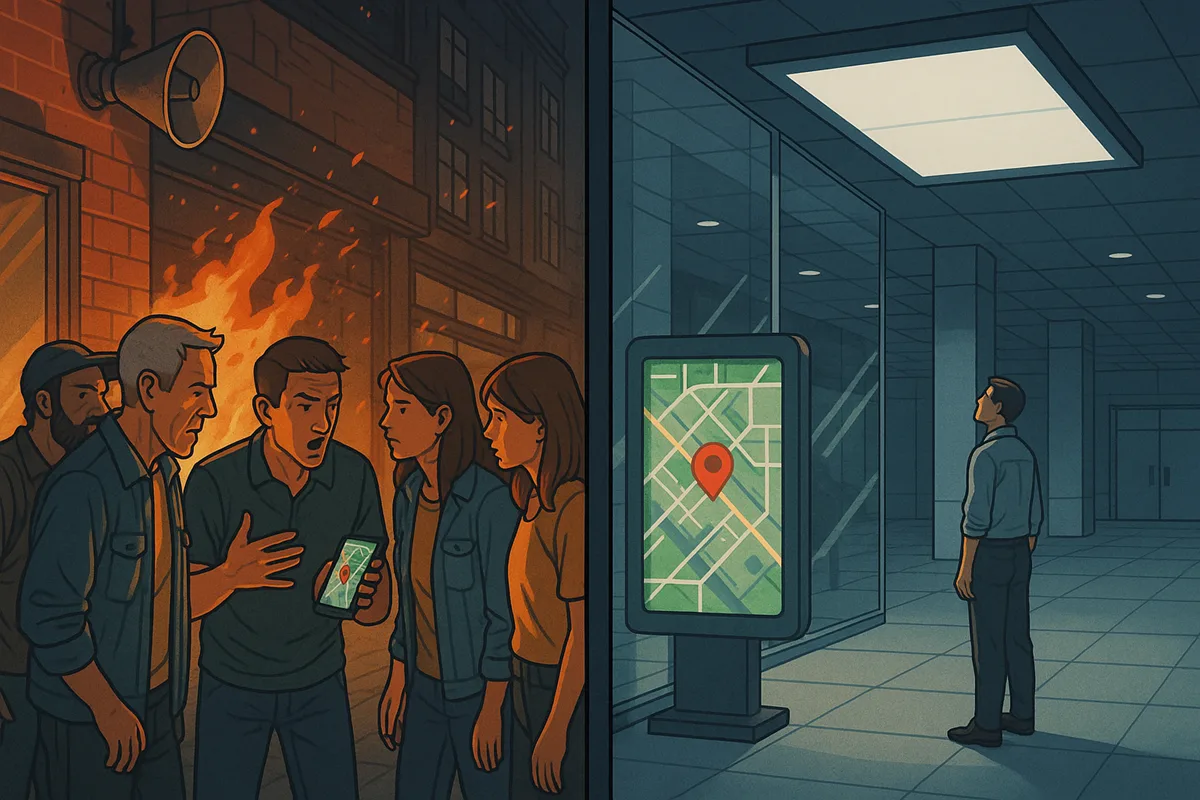一个App的命运,从不是代码能决定的,而是社会想象力的投射。
Citizen不是技术奇观,而是“知情即正义”的社会观念之具象。它相信:混乱是可共识的,真相可以协作处理,危险并非必须隐匿。它允许人们在枪声未平时打开地图,在火光未灭前对陌生人说“注意安全”。这是一种把不安公开、让共识生成的文化信仰。
而在另一个维度里,安全不是被“察觉”,而是被“宣布”的。不是来自周围的共识协作,而是来自上方的安抚注射。信息不是风,而是天花板上的灯光:看见什么,由它决定。这不是技术不可能,而是信任结构不同。
安全,不只是“有没有危险”,而是“你能不能参与定义什么是危险”。
因此,Citizen之所以“只属于某些国家”,并非因为技术“禁运”,而是因为它属于一种文化——相信城市是协作体,而非管理对象;它属于一种制度——允许个体恐慌中仍拥有发声权;它属于一种政治心理——容许安全感生成于真实冲突,而非强制遮蔽之中。
我们真正需要问的不是“有没有Citizen”,而是:
谁能定义安全?谁来发布风险?我们是否有权在混乱中知情,并决定如何生存?
在“安全是参与”与“安全是管控”之间,我们看见的不只是国家政策的差异,而是两种未来的可能性结构。
Defining Safety: A Struggle over Structures of Trust
The fate of an app is never decided by its code alone—it is the projection of a society’s imagination.
Citizen is not a marvel of technology, but a crystallization of a belief: that to be informed is to be just. It assumes that chaos can be collectively processed, that truth can be navigated together, that danger need not be hidden. It allows people to open a map before the gunfire stops, to warn strangers before the flames are out. It is a cultural faith in making unease visible, in generating consensus through exposure.
But in another dimension, safety is not something perceived—it is something announced. It does not arise from collective awareness but from top-down sedation. Information is not wind—it is a ceiling light: what you see depends on who controls the switch. This is not a matter of technological feasibility, but of structural trust.
Safety is not merely the absence of danger—it is the right to participate in defining what counts as danger.
That is why Citizen “belongs only to certain nations”—not because of any export ban on its code, but because it belongs to a certain culture: one that sees cities as collaborative organisms, not objects of control; to a certain system: one that grants individuals the right to speak even in fear; to a certain political psyche: one that allows safety to emerge through real conflict, not enforced concealment.
The real question is not whether we have a Citizen, but:
Who defines safety? Who is allowed to declare risk? Do we have the right to be informed amid chaos—and to decide how we survive it?
Between safety as participation and safety as containment, what we’re witnessing is not just a difference in national policy—but a divergence in the very architecture of the future.

